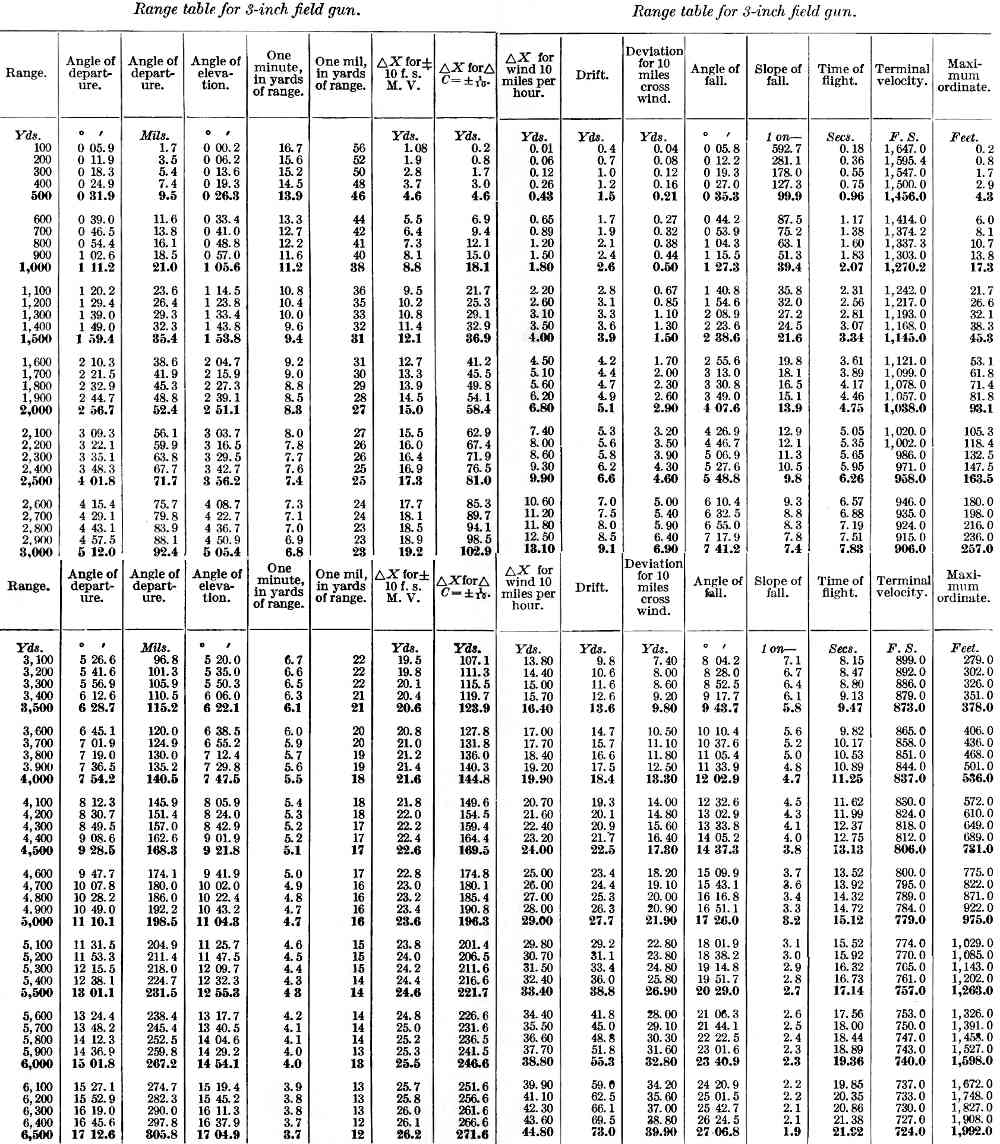Range Table on:
[Wikipedia]
[Google]
[Amazon]
A range table was a list of angles of elevation a particular artillery gun barrel needed to be set to, to strike a target at a particular distance with a projectile of a particular weight using a propellant cartridge of a particular weight. They were used for several centuries by field and naval gunners of all countries until gradually replaced by computerised fire-control systems beginning in

Cartridge :
Rings : , .3 mm flake
Projectile : Bomb, 10 lb. 11 oz (4.85 kg)
Gunnery and explosives for field artillery officers
, Government Printing Office, Washington, 1911, Appendix B. Artillery operation
World War II
World War II or the Second World War (1 September 1939 – 2 September 1945) was a World war, global conflict between two coalitions: the Allies of World War II, Allies and the Axis powers. World War II by country, Nearly all of the wo ...
(1939–1945).
Range table for US 3-inch (76.2 mm) field gun, models 1902-1905
This gun used a standard "fixed" cartridge with shell, hence a single set of tables applied to all its ammunition.
Range table for British 3 inch (76.2 mm) Stokes Mortar, 1917
Different propellant charges were used to achieve required range, angle of descent and flight time. This is typical of mortars and howitzers. (Provisional) Range Table For 3-InchStokes Mortar
The Stokes mortar was a British trench mortar designed by Sir Wilfred Stokes KBE that was issued to the British and U.S. armies, as well as the Portuguese Expeditionary Corps, during the latter half of the First World War. The 3-inch trench m ...
, Printed in September 1917.Range Tables transcribed and supplied courtesy of John Reed
Cartridge :
ballistite
Ballistite is a smokeless propellant made from two high explosives, nitrocellulose and nitroglycerine. It was developed and patented by Alfred Nobel in the late 19th century.
Military adoption
Alfred Nobel patented Ballistite in 1887 while li ...
, reinforced with Charges : 5 grains, guncotton
Nitrocellulose (also known as cellulose nitrate, flash paper, flash cotton, guncotton, pyroxylin and flash string, depending on form) is a highly flammable compound formed by nitrating cellulose through exposure to a mixture of nitric acid and ...
yarn
Rings : , .3 mm flake
cordite
Cordite is a family of smokeless propellants developed and produced in Britain since 1889 to replace black powder as a military firearm propellant. Like modern gunpowder, cordite is classified as a low explosive because of its slow burni ...
Projectile : Bomb, 10 lb. 11 oz (4.85 kg)
Notes
{{ReflistReferences
* (Provisional) Range Table For 3-Inch Stokes Mortar, September 1917. United Kingdom War Office. * William Westervelt,Gunnery and explosives for field artillery officers
, Government Printing Office, Washington, 1911, Appendix B. Artillery operation